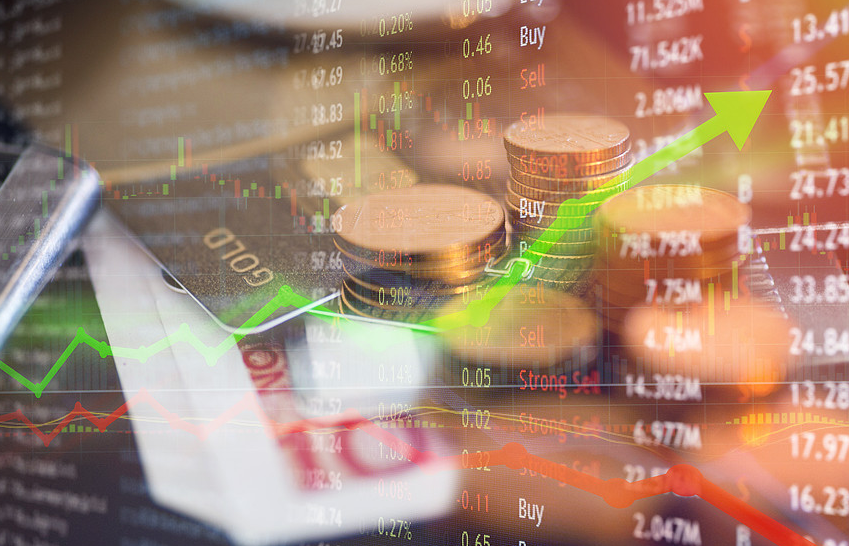Gold Prices Soar, Gold Funds Follow Suit
Advertisements
Throughout 2023, the gold market has been on an extraordinary upward trajectory, with international gold prices consistently hitting new highs. By the date of February 14, gold futures traded on the COMEX had seen an impressive year-to-date increase of nearly 10%, briefly reaching the remarkable price of $2,968 per ounce. This surge has not only attracted seasoned investors but also catalyzed significant interest in gold exchange-traded funds (ETFs), which have demonstrated an equally strong performance, boasting an annual increase exceeding 11% and reaching unprecedented levels in terms of both size and net asset value.
On February 11, during trading sessions at the New York Mercantile Exchange, gold futures briefly surpassed the psychological barrier of $2,960 per ounce, thereby establishing yet another historical record in a decade-long bull market. To underscore just how far gold prices have ascended, a brief retrospective reveals that in late 2015, COMEX gold futures plummeted below $1,100 per ounce. However, since then, they have experienced an unrelenting climb; to illustrate, during 2023, gold prices soared by over 13%, while projections for 2024 suggest an astounding yearly increase of more than 27%.
This remarkable surge in gold prices is attributed to various factors that align with its inherent identities as a commodity, currency, and safe-haven asset. For starters, the prevailing global economic landscape is riddled with uncertainties, exacerbated by various geopolitical tensions and fiscal policies, particularly in the United States, which has resulted in rampant speculation and anxiety in the financial markets. Investors, seeking stability amid the chaos, have increasingly turned to gold as a secure store of value, subsequently driving prices higher.
Additionally, the monetary aspect of gold cannot be ignored, as central banks around the globe have demonstrated a pronounced fervor for accumulating gold reserves. According to statistics from the World Gold Council, central banks have collectively purchased over 1,000 tons of gold for three consecutive years, with 2024 expected to surge to an impressive 1,044.6 tons. Nations like China, Poland, and India have significantly ramped up their gold procurement strategies, strengthening market demand and bolstering optimism among investors—further propelling prices upwards.

As gold price surges continued, related sectors in the stock market reaped substantial rewards. For instance, the metals and mining sector in China has shown increased performance, with a year-to-date gain exceeding 8%, securing its position as the fourth-best performing industry. More prominently, the dedicated gold stocks have soared, boasting annual increases of over 15%. In this context, gold ETFs have far outperformed broader market indices, with an analysis conducted by Securities Times indicating that as of February 14, 20 different gold-focused ETFs—comprising both commodity and equity-based funds—recorded a net asset value growth exceeding 11%, with an average return rate of 12.21%. Notably, many of these funds established new record high net asset values.
Highlighting specific examples, the Yongying CSI Shanghai-Shenzhen-Hong Kong Gold Industry Stocks ETF achieved a year-to-date increase of 14.39%, placing it at the forefront. This ETF holds substantial positions in major companies like Shandong Gold and Zijin Mining, which have seen their stocks appreciate significantly, with some stocks witnessing gains of more than 30% during the year.
Continuing the strong trend from the previous year, gold-themed ETFs overall delivered impressive returns, with ten funds from last year exceeding 27% in total returns. Market leaders have posted promising earnings; for instance, Zijin Mining is estimated to reach a net profit of approximately 32 billion RMB for 2024, up by around 51.5% year-on-year. Similarly, Chifeng Gold anticipates a 2024 net profit ranging between 1.73 billion to 1.8 billion RMB, reflecting a remarkable increase of 115.19% to 123.90% compared to the previous year.
The influx of investment into gold ETFs has been buoyed by a substantial "profit-making effect," drawing numerous investors into the sector. Data shows that the aggregate net inflow into 20 gold ETFs in 2023 has reached 4.95 billion RMB, with funds like Hua'an Gold ETF and Guotai Gold ETF attracting over 1.5 billion RMB apiece.
As of February 14, the net asset values of gold-themed ETFs surpassed 85.6 billion RMB, marking an increase of 13.02 billion RMB (17.93%) from the end of the previous year. Among these, Hua'an Gold ETF commanded a standout position as it reached a new historical high approaching 33.9 billion RMB, marking it as the front-runner in assets.
In its quarterly report for the fourth quarter of 2024, Hua'an Gold ETF praised gold's robust performance, attributing it to three critical factors: Firstly, the anticipated onset of a Federal Reserve interest rate cut cycle in September 2024, with further reductions expected in November and December. This easing of monetary policies is regarded favorably for gold investments. Secondly, the ongoing trend of de-dollarization has led several global central banks, including the People's Bank of China, to increase their gold holdings in late 2024. Thirdly, amidst rapidly evolving global policies and increasing uncertainties across major asset classes, gold is regarded as an essential allocation strategy for investors. Given the dual pressure of high debt and elevated interest rates in the U.S., the necessity of including gold in investment portfolios is steadily becoming more pronounced.
Brokerage firms have also expressed optimism regarding the future trajectory of gold. Phrases such as "gold bull market," "medium to long-term allocation value," and "upward cycle of gold prosperity" have surfaced repeatedly in research and analysis reports. For instance, Minsheng Securities, considering the prevailing climate of excessive monetary supply, weakening dollar credibility, rising geopolitical tensions, and potential inflationary risks in the U.S., emphasizes that tariffs, struggling returns on overseas risky assets, and the continuous acquisition of gold by global central banks serve to reinforce gold's attributes as a hedge and a means of preserving value. With the price of gold on the rise, many believe we are on the verge of an accelerated gold bull market. In light of the anticipated extended period of interest rate cuts in the U.S., this institution posits that substantial upside potential remains for gold prices in the future.
Post Comment